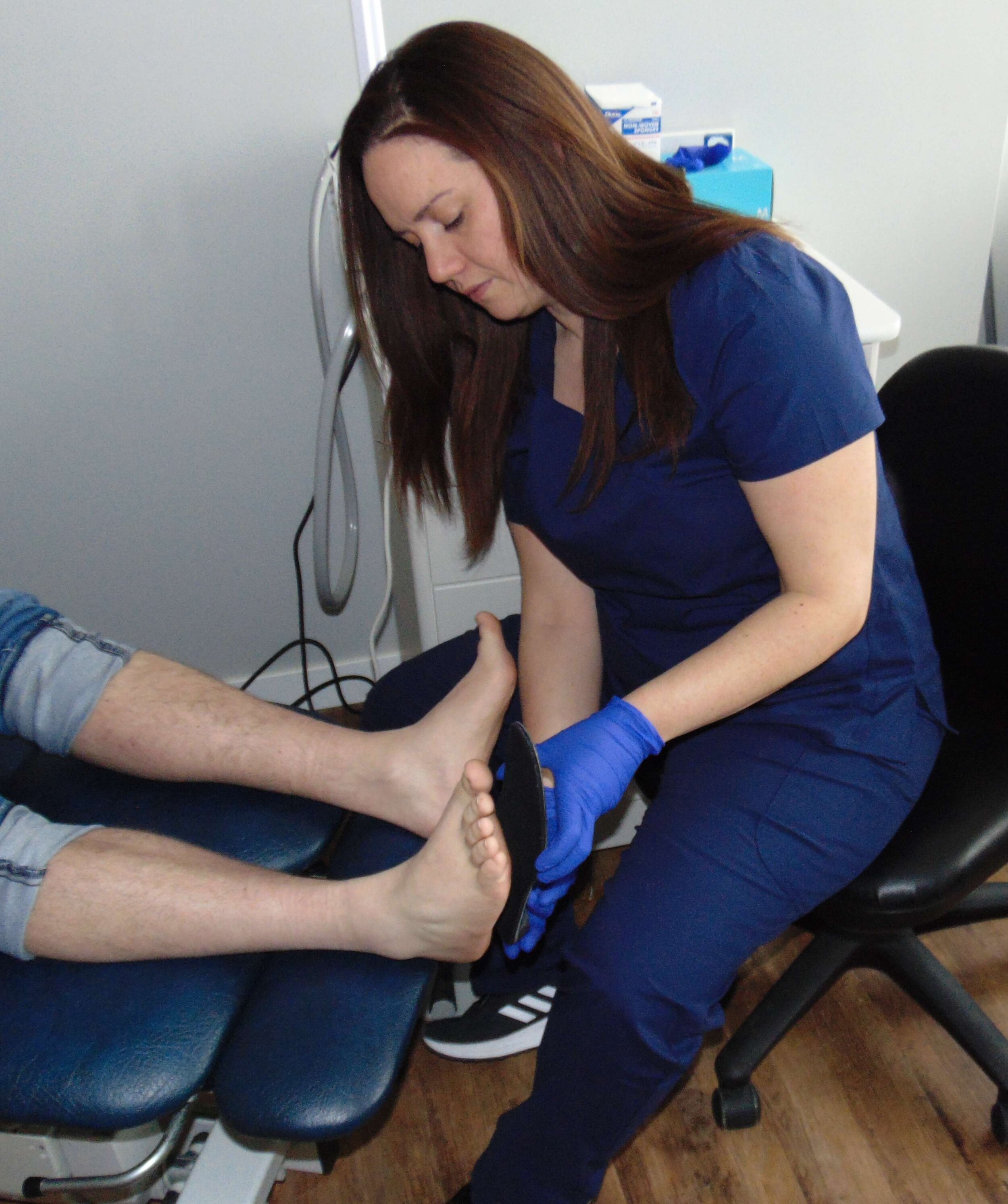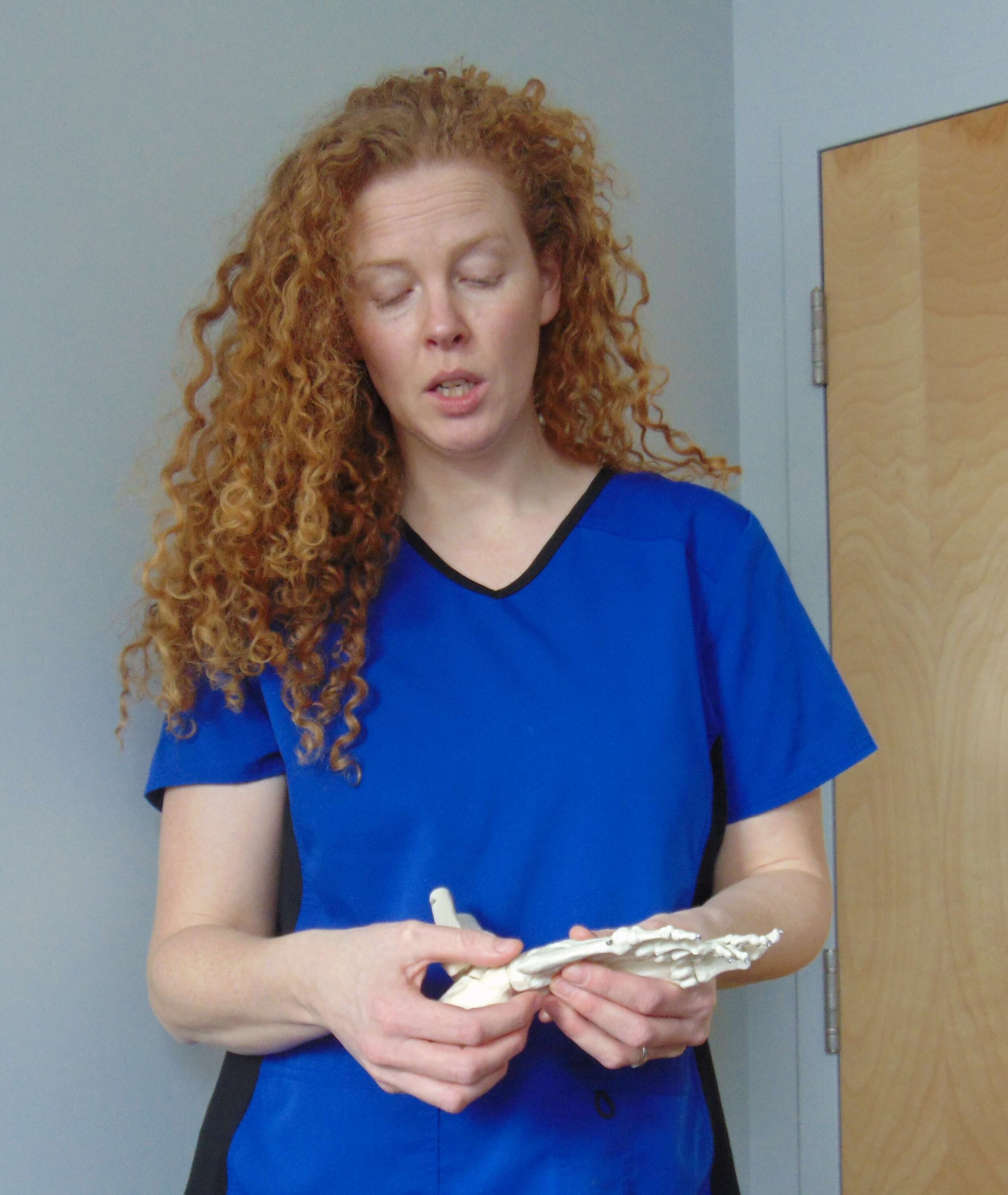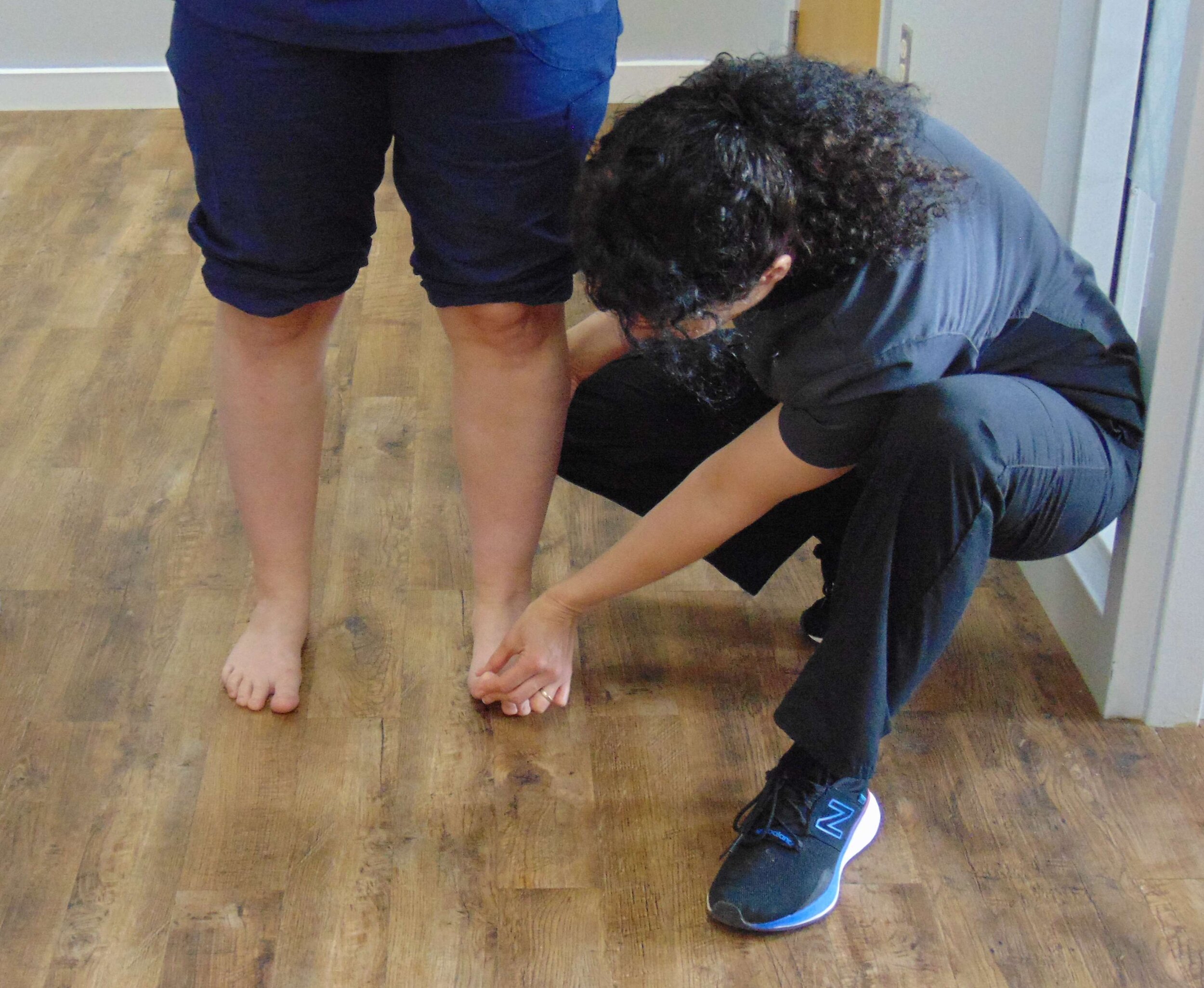Biomechanics
Callous, Corn and Wart Treatments
Corns and calluses are protective layers of compacted, dead skin cells. They are caused by repeated friction from skin rubbing against bony areas or against an irregularity in a shoe. Corns ordinarily form on the toes and calluses on the soles of the feet. The friction and pressure can burn or otherwise be painful and may be relieved by moleskin or padding on the affected areas.
Plantar warts, also known as verrucas, appear on the soles of the feet and are one of several soft tissue conditions that can be quite painful. Unlike other foot warts, plantar warts tend to be hard and flat, with a rough surface and well-defined boundaries. They are often gray or brown (but the color may vary), with a center that appears as one or more pinpoints of black. The virus that causes plantar warts thrives in warm, moist environments, making infection a common occurrence.
Custom Made Orthotics
Foot Mobilization Techniques
Diabetic Foot Care and Assessment
Nail Care
Nail Disorders
Ingrown Toe Nails and/or Nail Surgery
Ingrown toenails, also known as onychocryptosis, is usually caused by trimming toenails too short, particularly on the sides of the big toes. They may also be caused by shoe pressure (from shoes that are too tight or short), injury, fungus infection, heredity, or poor foot structure. Ingrown toenails occur when the corners or sides of the toenail dig into the skin, often causing infection. A common ailment, ingrown toenails can be painful. Ingrown toenails start out hard, swollen, and tender. Left untreated, they may become sore, red, and infected and the skin may start to grow over the ingrown toenail.
Pediatric Assessment and Foot Care
Sports Injuries
Swiss DolorClast® Radial Shock Wave Therapy
Wound Care
Ulcers are skin wounds that are slow to heal. In the foot, as prominent metatarsal heads on the plantar (bottom of the foot) are subjected to increased pressure, the skin begins to become callused. When subjected to shearing forces, there is a separation between the layers on this callused skin, which fills with fluid and becomes contaminated and infected. The result is a foot ulcer.



